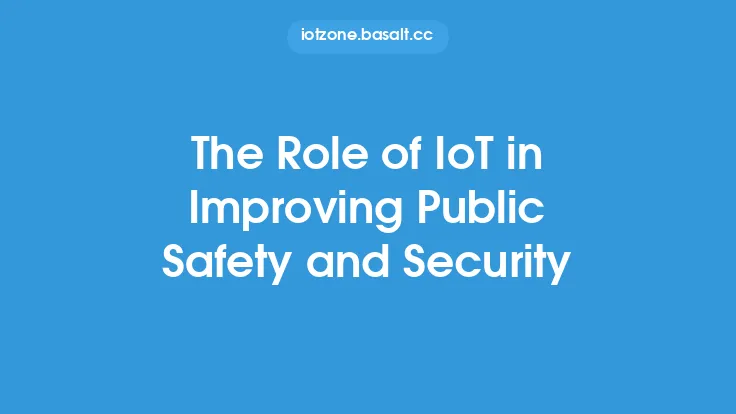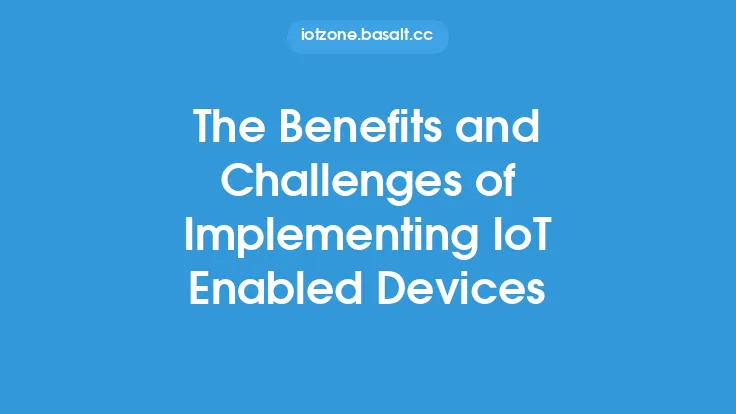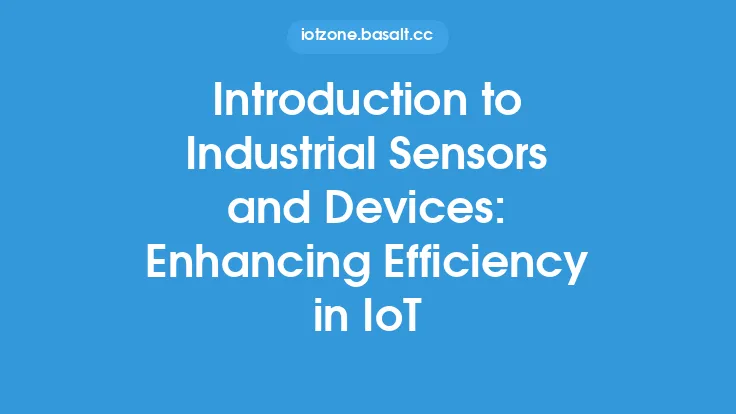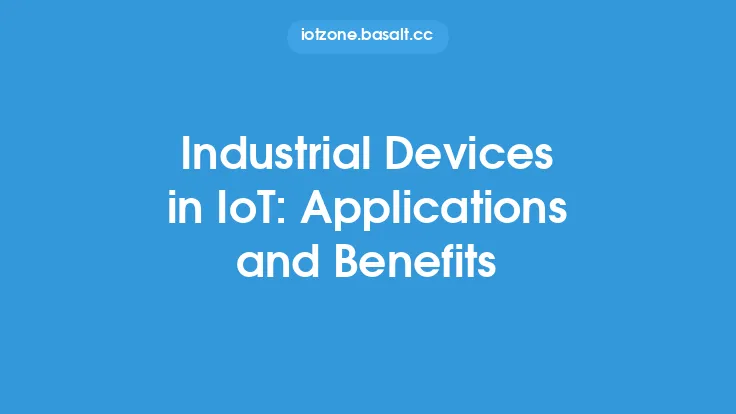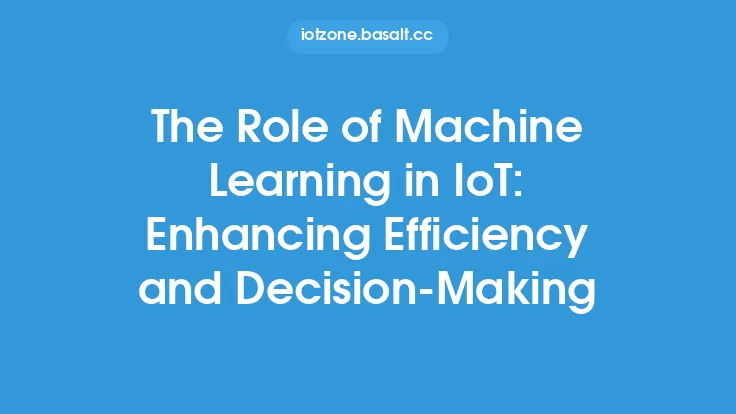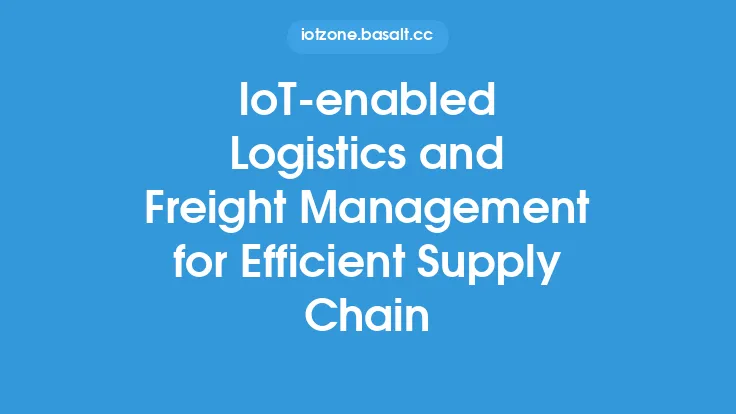The integration of Internet of Things (IoT) technology in transportation systems has revolutionized the way we travel, making it safer, more efficient, and more convenient. IoT enabled devices in transportation are transforming the industry by providing real-time data, improving vehicle performance, and enhancing the overall travel experience. In this article, we will delve into the world of IoT enabled devices in transportation, exploring their applications, benefits, and the technology behind them.
Introduction to IoT in Transportation
IoT in transportation refers to the use of IoT devices, sensors, and communication technologies to connect vehicles, infrastructure, and other components of the transportation system. This connectivity enables the exchange of data, which can be used to improve safety, reduce congestion, and increase efficiency. IoT enabled devices in transportation include a wide range of technologies, such as GPS tracking, traffic management systems, and vehicle-to-everything (V2X) communication.
Applications of IoT Enabled Devices in Transportation
IoT enabled devices have numerous applications in transportation, including:
- Traffic Management: IoT sensors and cameras can monitor traffic flow, detecting congestion and accidents, and providing real-time updates to drivers and traffic management centers.
- Vehicle Tracking: GPS tracking devices can monitor the location and status of vehicles, enabling fleet management and logistics companies to optimize routes and improve delivery times.
- Predictive Maintenance: IoT sensors can monitor vehicle performance, detecting potential issues before they become major problems, and enabling proactive maintenance.
- Driver Assistance: IoT enabled devices, such as lane departure warning systems and blind spot detection, can improve driver safety and reduce the risk of accidents.
- Smart Parking: IoT sensors can monitor parking availability, guiding drivers to available spaces and reducing congestion in urban areas.
Technology Behind IoT Enabled Devices in Transportation
The technology behind IoT enabled devices in transportation is based on a combination of hardware and software components, including:
- Sensors: IoT sensors, such as accelerometers, gyroscopes, and GPS, can monitor vehicle performance, traffic flow, and other parameters.
- Communication Protocols: IoT devices in transportation use various communication protocols, such as cellular, Wi-Fi, and dedicated short-range communication (DSRC), to exchange data with other devices and systems.
- Data Analytics: IoT data analytics platforms can process and analyze the vast amounts of data generated by IoT devices, providing insights and recommendations to improve safety and efficiency.
- Artificial Intelligence: AI algorithms can be used to analyze IoT data, detecting patterns and anomalies, and enabling predictive maintenance and driver assistance systems.
Benefits of IoT Enabled Devices in Transportation
The benefits of IoT enabled devices in transportation are numerous, including:
- Improved Safety: IoT enabled devices can reduce the risk of accidents, improve driver safety, and enhance the overall travel experience.
- Increased Efficiency: IoT enabled devices can optimize routes, reduce congestion, and improve delivery times, making transportation more efficient and cost-effective.
- Enhanced Customer Experience: IoT enabled devices can provide real-time updates, enable smart parking, and offer personalized services, enhancing the overall customer experience.
- Reduced Maintenance Costs: IoT enabled devices can detect potential issues before they become major problems, reducing maintenance costs and improving vehicle performance.
Challenges and Limitations of IoT Enabled Devices in Transportation
While IoT enabled devices in transportation offer numerous benefits, there are also challenges and limitations to consider, including:
- Security: IoT devices in transportation can be vulnerable to cyber threats, compromising safety and security.
- Interoperability: IoT devices from different manufacturers may not be compatible, limiting their ability to communicate and exchange data.
- Data Management: The vast amounts of data generated by IoT devices can be challenging to manage, requiring advanced data analytics platforms and AI algorithms.
- Regulatory Frameworks: The regulatory frameworks governing IoT in transportation are still evolving, creating uncertainty and potential barriers to adoption.
Future of IoT Enabled Devices in Transportation
The future of IoT enabled devices in transportation is exciting and promising, with emerging technologies, such as 5G networks, edge computing, and autonomous vehicles, set to transform the industry. As IoT enabled devices become more widespread, we can expect to see:
- Increased Adoption: IoT enabled devices will become more prevalent, with more vehicles and infrastructure connected to the internet.
- Improved Safety: IoT enabled devices will continue to improve safety, reducing the risk of accidents and enhancing the overall travel experience.
- Enhanced Efficiency: IoT enabled devices will optimize routes, reduce congestion, and improve delivery times, making transportation more efficient and cost-effective.
- New Business Models: IoT enabled devices will enable new business models, such as mobility-as-a-service and transportation-as-a-service, changing the way we travel and interact with transportation systems.
